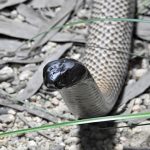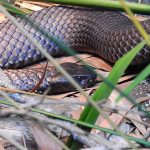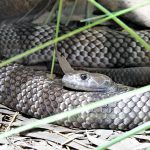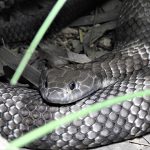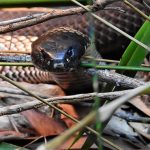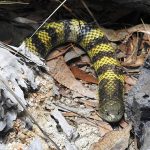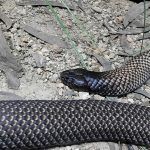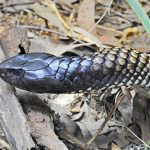TIGER SNAKE
The Tiger Snake:
In the diverse tapestry of Australia’s wildlife, the tiger snake (Notechis scutatus) stands out as one of the most intriguing and formidable reptiles. Renowned for its potent venom and distinctive appearance, this species offers a fascinating glimpse into the adaptability and complexity of Australian fauna.
Physical Characteristics
Tiger snakes exhibit remarkable variability in their coloration and patterns. While many display the characteristic black and yellow banding reminiscent of a tiger’s stripes, others may present in hues ranging from olive and brown to jet-black. This variability often leads to misidentification, especially among juveniles, which can resemble the eastern brown snake (Pseudonaja textilis).
Adult tiger snakes typically measure between 1 to 1.2 meters in length, though some individuals can grow up to 2 meters. They possess a robust, solidly built body with a broad, flat head, aiding in their identification.
Habitat and Distribution
Tiger snakes are predominantly found in the southern and southeastern regions of Australia, including Tasmania and various offshore islands. Their preferred habitats encompass coastal areas, wetlands, creeks, dams, and other watercourses. They are also known to inhabit dry sclerophyll forests and open woodlands.
In Queensland, tiger snakes are primarily located in the southeastern coastal regions, including areas like the Sunshine Coast and the Gold Coast Hinterland. Notably, they are absent from the Brisbane region, with the only recorded specimen from North Stradbroke Island nearly a century ago. (snakecatchers.com.au)
Behaviour and Diet
Tiger snakes are versatile in their locomotion, capable of swimming and climbing, which allows them to exploit a wide range of habitats. They are primarily diurnal but may become nocturnal during hotter periods. When threatened, they exhibit a distinctive defensive posture by flattening their bodies and raising their heads above the ground.
Their diet is diverse and changes with age and habitat. Juvenile tiger snakes mainly feed on frogs, while adults consume a broader range of prey, including fish, lizards, birds, and small mammals. In Tasmania, their diet includes larger quantities of mammals and birds, and some island populations feed exclusively on scincid lizards or take advantage of seasonally available food sources like mutton-bird chicks.
Venom and Human Interaction
Tiger snakes possess one of the most potent venoms among Australian snakes, containing neurotoxins, coagulants, haemolysins, and myotoxins. Symptoms of envenomation include localized pain, tingling, numbness, sweating, and, if untreated, rapid onset of breathing difficulties and paralysis.
Despite their venomous nature, tiger snakes are generally not aggressive and prefer to avoid human contact. However, if provoked, they can deliver a swift and accurate strike. In the past, tiger snakes were responsible for a significant number of snakebite incidents in Australia, but their numbers have declined in recent decades due to habitat modification and urban sprawl. (australiangeographic.com.au)
Reproduction
Tiger snakes are viviparous, giving birth to live young. Mating typically occurs in spring, with females producing litters ranging from 20 to 30 neonates, though larger litters have been recorded. The young are fully formed and resemble adults, with no maternal care provided post-birth.
Conservation Status
While tiger snakes are not currently listed as endangered, they are protected species in most Australian states. It is illegal to kill or injure a tiger snake, with penalties including fines and potential imprisonment. Conservation efforts focus on habitat preservation and public education to reduce human-snake conflicts.
The tiger snake is a remarkable example of Australia’s unique wildlife, showcasing adaptability and resilience. Understanding and respecting this species is crucial for coexisting safely and ensuring its continued presence in the Australian ecosystem.

